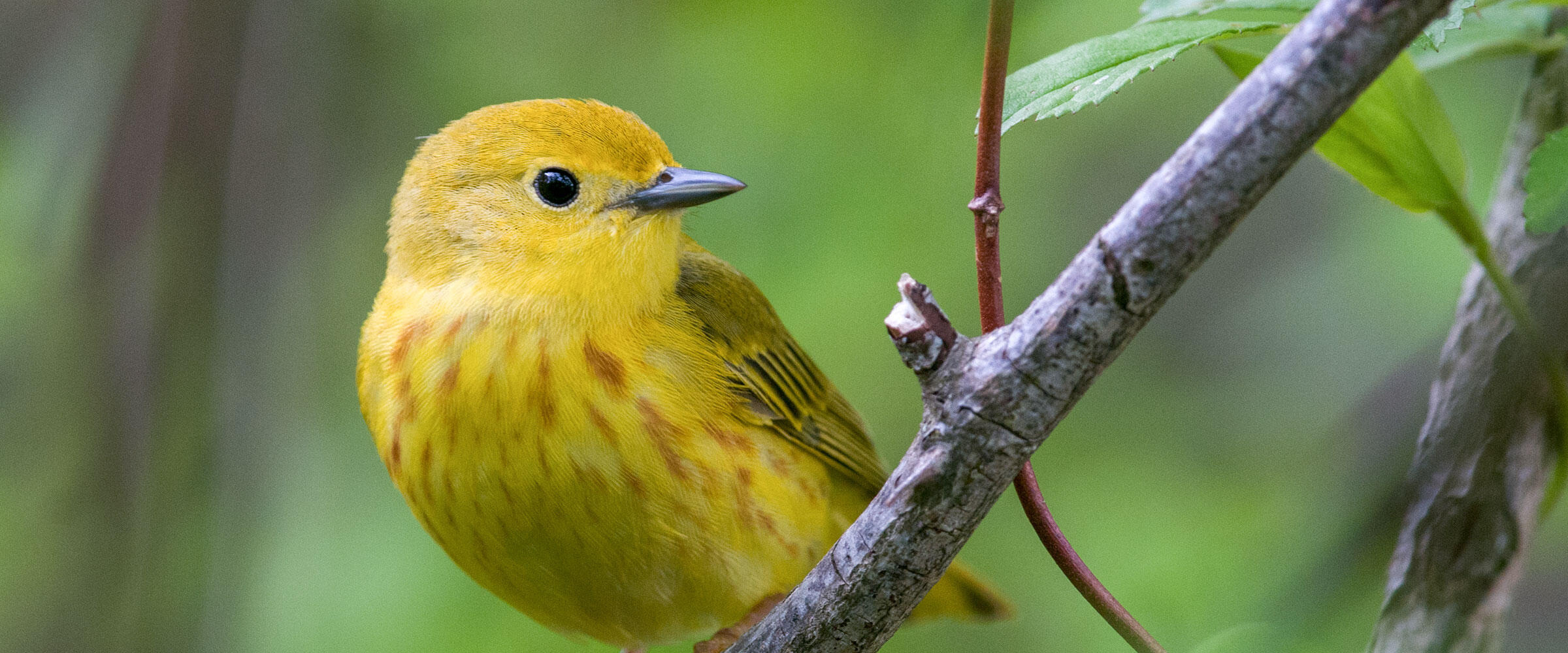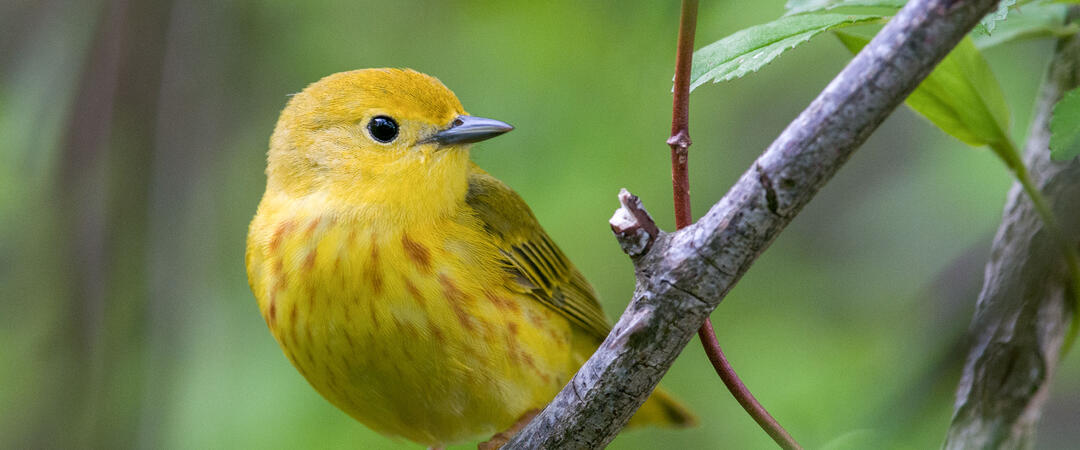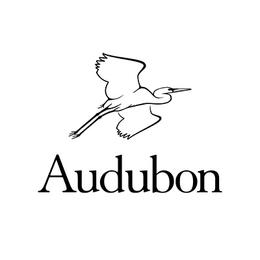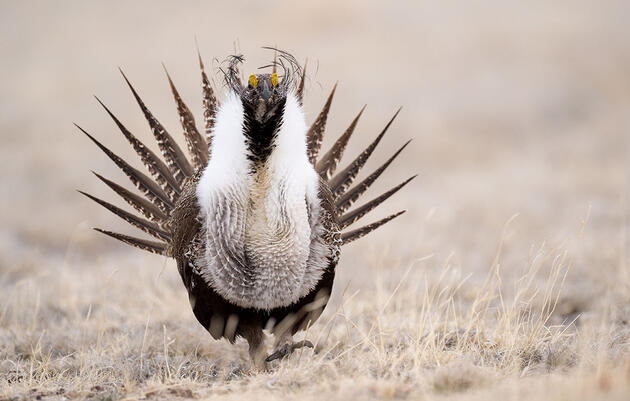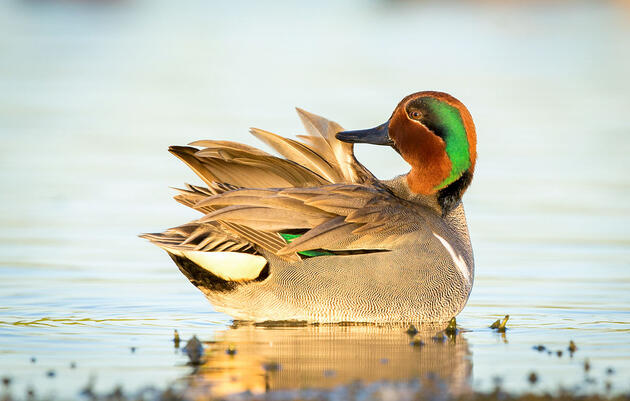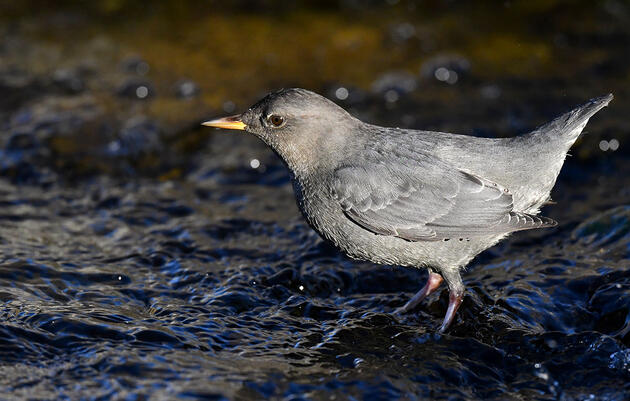On November 23, the Colorado Oil and Gas Conservation Commission (COGCC)—the state board that approves drilling permits and regulates the oil and gas industry—finalized a rulemaking process that amended its permitting regulations as part of the agency’s extraordinary change in mission.
Colorado's intense rulemaking effort was set in motion by Senate Bill 181, which the Legislature passed and Governor Polis signed in 2019. The law changed the agency’s mission from facilitating oil and gas development to regulating it in a manner that protects health, safety, and the environment, including wildlife. These significant changes to the law are groundbreaking and set Colorado as a national leader in holistic energy planning.
Rulemaking Under COVID-19
The past three months of work have occurred under unprecedented pandemic conditions, yet a wide range of interests still weighed in on recommendations for what the final regulations should entail. Audubon became a party in the proceedings, coordinated with other organizations, met with decision-makers, and joined other stakeholders in proposing solutions to tough challenges.
“We all wanted to get this right because these opportunities to influence important regulations like these rarely come around. A lot of people were around the table making sure their perspectives were part of the discussion,” said Nada Culver, vice president for public lands and senior policy counsel at the National Audubon Society.
When asked about surprising outcomes, Culver spoke about the level of collaboration. “We sat down, had real conversations. These conversations just happened to be via Zoom or phones. But they were effective, despite the chaos around us. That speaks to the commitment of the people involved and Colorado’s foresight that changes were needed.”
To generate public input, Audubon co-hosted a public webinar to explain the details of the process and provide guidance on what additional wildlife protections were needed. Audubon also reached out to more than 35,000 of our members across Colorado, providing an easy way to engage from the safety and comfort of their homes.
Elevating the role of science to support strong protections for birds and wildlife, Audubon also brought in riparian (dynamic and productive habitats alongside streams and rivers) and sage-grouse experts to testify before the Commission during the formal hearing, including Audubon Rockies’ Western Rivers Regional Program Manager Abby Burk. Burk championed protection of riverscapes (streams, floodplains, rivers, and the vegetation surrounding them) in her testimony because they support habitat critical to birds and other wildlife and ecological services that directly influence water quality and quantity.
“Our discussions around connectivity and the broader value of healthy riverscapes, played a role in the Commission’s decision to vote to support 500-foot setbacks along really important river stretches,” noted Burk. “This is unprecedented in the West and has real tangible benefits.” Riparian areas make up just one percent of Colorado’s landscape but 80 percent of the region’s wildlife species depend on these areas for some portion of their life cycle.
Outcomes of the New Rules
Thanks to the resilient commitment of so many people, new and improved habitat protections will create a better future for wildlife. Key wins include new protections for streams, riparian areas, and wildlife corridors; strengthened protections for migratory birds and sage-grouse; and a commitment to mitigating unavoidable adverse impacts.
Dan Haley, president and CEO of the Colorado Oil & Gas Association, wrote in a press release, “Colorado now undoubtedly has the toughest oil and natural gas development regulations in the country, which further protect the environment and ensure that the molecules of energy produced here locally are cleaner than most anywhere in the world. All of Colorado can be proud of that.”
According to Culver, “Given where we started, where the COGCC originally was mandated to simply permit oil and gas in the state, to now having regulations that protect wildlife, the environment, public health, safety, and welfare is huge. Is it perfect? No, but it is a big step in the right direction for Colorado’s people and wildlife. We are celebrating it and recognize it as transformative.”
Colorado’s birds now have the following protections:
- High priority habitats (HPHs)—i.e., breeding, nesting, foraging, and migrating—for select species were identified, within which energy operators are to avoid, minimize, and mitigate impacts to wildlife. Mapping of HPHs will occur annually, buffers will increase around some areas (i.e., sage-grouse breeding grounds, nesting areas, etc.) and the number of species included has expanded. If oil and gas development is proposed within an HPH, alternative location analyses will be required.
- Stronger wildlife protections outside high priority habitats.
- Considerable protections for riparian areas, most notably No Surface Occupancy (“no go”) zones within 500 feet of “Gold Medal” waters, cutthroat trout-designated crucial habitat, native fish and other native aquatic species conservation waters, and sportfish management waters.
- Commitment to offset unavoidable adverse impacts.
- Creation of compensatory mitigation plans that will offset the direct and avoidable adverse indirect impacts to wildlife resources. These will consider scale, scope, intensity, and duration of impacts to wildlife resources. Plans will include monitoring and reporting requirements.
- During operations at an oil and gas site, use of fences and nets on open pits to protect birds and bats.
- Nesting and migratory bird surveys prior to vegetation removal before construction. When active nests are located, creation of work zone buffers.
- A broader consultation role for Colorado Parks and Wildlife.
In addition, the COGCC established two working groups that will begin work in January:
- A technical working group that will study the riverscape concept in an effort to tailor riparian protections based on stream characteristics.
- Biological Resources Working Group to evaluate sources of information about vegetation, including rare plants; topsoil; wildlife and wildlife habitat; non-wildlife threatened and endangered species; ecosystems, habitat heterogeneity, and biodiversity; and invasive species management.
The unanimously approved rules will go into effect on January 15, but they have already positioned Colorado as a leader in energy development. For that, we have legislators, COGCC staff and commissioners, strong engagement by Colorado Parks and Wildlife staff and commissioners, and thousands of passionate community members to thank.
Additional Resources
- Interactive map showing the newly protected areas.
- The COGCC'S final revised regulations.
- Webinar recording from July 2020 explaining the rulemaking process.

